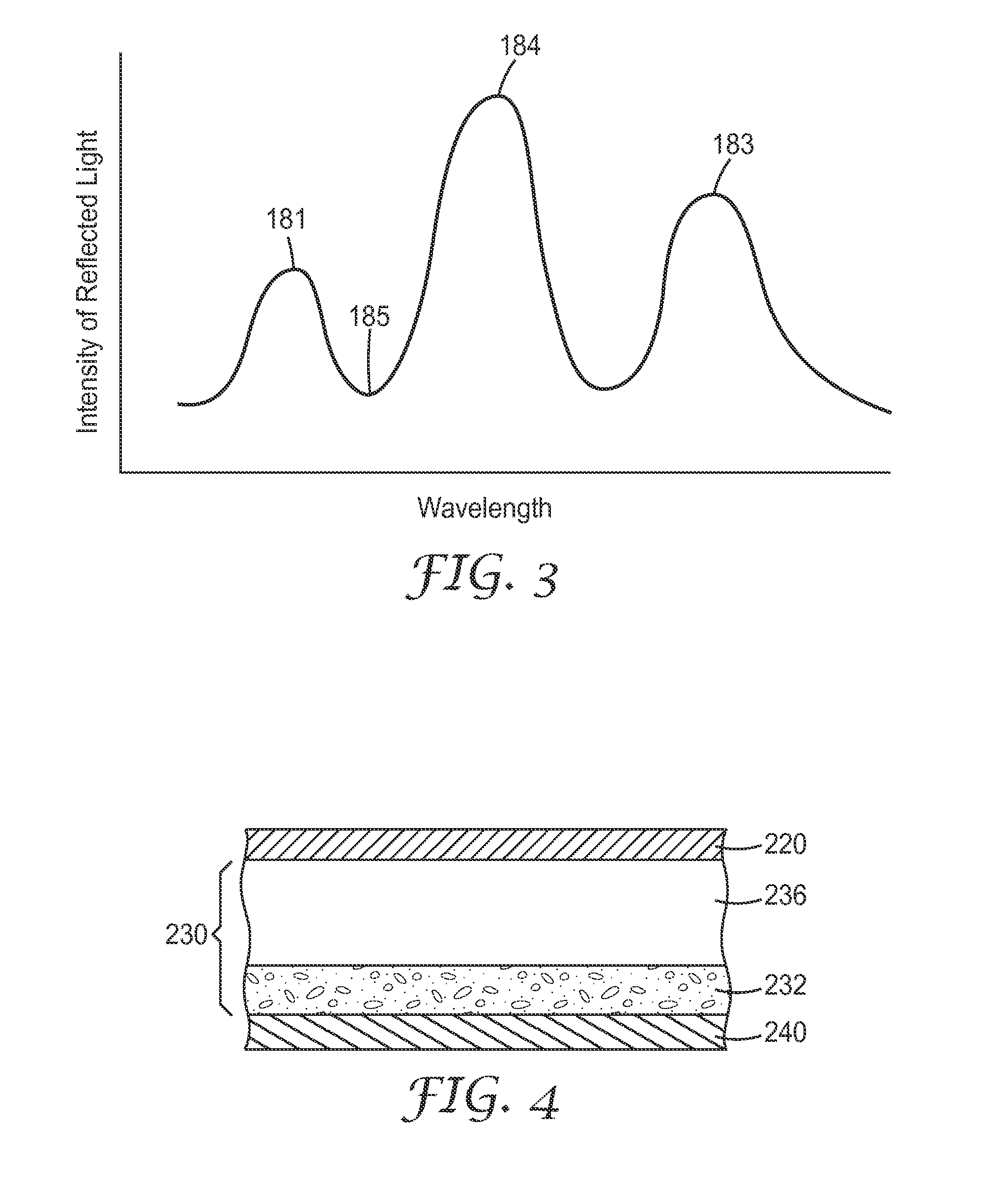Multilayer colorimetric sensors
a colorimetric sensor and multi-layer technology, applied in the field of multi-layer colorimetric sensors, can solve the problems of complex or bulky optoelectronic components, many of these systems have lifetime limitation problems,
- Summary
- Abstract
- Description
- Claims
- Application Information
AI Technical Summary
Benefits of technology
Problems solved by technology
Method used
Image
Examples
examples
[0076]All reagents and materials used in these examples were obtained from Sigma-Aldrich, St. Louis, Mo., unless otherwise noted.
Preparation of TFTN-PIM 1:
[0077]In a 2.0 L three-neck round bottomed flask, 33.4357 g of 3,3,3′,3′-tetramethyl-1,1′-spirobisindane-5,5′,6,6′-tetrol (tetrol) and 19.8016 g of tetrafluoroterephthalonitrile (TFTN) were dissolved in 900 mL of anhydrous N,N-dimethyl formamide (DMF). The solution was stirred with a mechanical stirrer, and nitrogen was bubbled through the solution for one hour. To this solution was added 81.4491 g of potassium carbonate (EMD Chemicals, Gibbstown, N.J.). The flask was placed in an oil bath at 68° C. The mixture was stirred at this elevated temperature under a nitrogen atmosphere for 65 hours. The polymerization mixture was poured into 9.0 L of water. The precipitate formed was isolated by vacuum filtration and washed with 600 mL of MeOH (VWR, West Chester, Pa.). The isolated material was spread out in a pan and allowed to air dry ...
PUM
 Login to View More
Login to View More Abstract
Description
Claims
Application Information
 Login to View More
Login to View More - R&D
- Intellectual Property
- Life Sciences
- Materials
- Tech Scout
- Unparalleled Data Quality
- Higher Quality Content
- 60% Fewer Hallucinations
Browse by: Latest US Patents, China's latest patents, Technical Efficacy Thesaurus, Application Domain, Technology Topic, Popular Technical Reports.
© 2025 PatSnap. All rights reserved.Legal|Privacy policy|Modern Slavery Act Transparency Statement|Sitemap|About US| Contact US: help@patsnap.com



